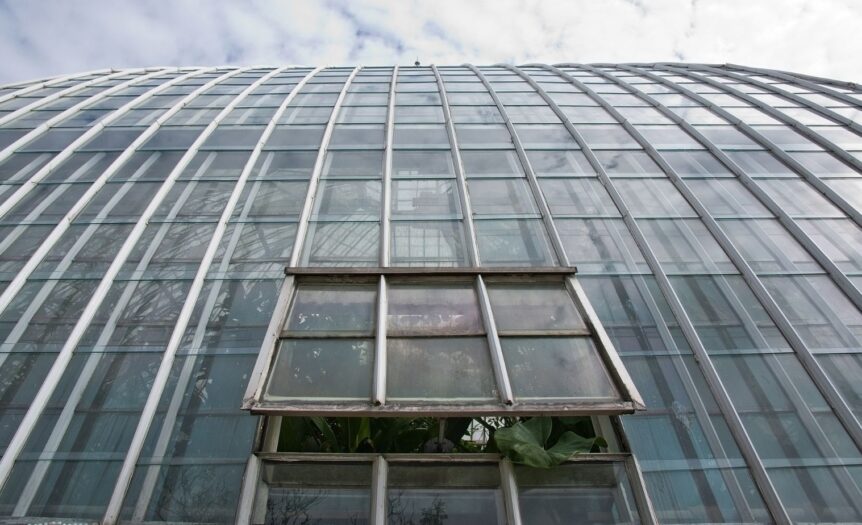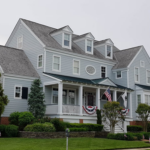The global garden design market has seen a significant rise in recent years, driven by the increasing interest in outdoor living spaces and the desire to create personalized, functional, and aesthetically pleasing environments. According to market research, the landscape and garden design industry is now worth billions, with the United States market alone estimated to be over $150 billion annually. This growth reflects a broader trend in home improvement, where homeowners are investing more in their gardens, viewing them as extensions of their living spaces.
Among the many materials that have gained popularity in garden design, bent glass stands out for its unique ability to combine form and function. Its sleek, modern aesthetic and versatile applications make it an ideal choice for contemporary gardens, offering both beauty and practicality. As the demand for innovative garden solutions continues to grow, bent glass has become a favored material among designers and homeowners alike.
What is Bent Glass?
Bent glass, also known as curved or curved tempered glass, is a type of glass that has been heated to a pliable state and then molded into a specific shape before being cooled and tempered. This process allows the glass to take on various curves and bends, creating elegant, fluid forms that are both visually striking and structurally sound.
The production of bent glass, such as that from Flickinger Glassworks involves several steps. First, flat glass is heated in a specialized kiln to a temperature of around 600-700 degrees Celsius. At this temperature, the glass becomes soft and malleable, allowing it to be shaped over a mold. The mold determines the final shape of the glass, whether it be a gentle curve, a sharp bend, or a complex, wave-like form. Once the glass has been shaped, it undergoes a cooling process known as annealing, which strengthens the glass and ensures it retains its new shape.
The result is a piece of glass that is not only durable and resistant to breakage but also aesthetically pleasing, with smooth, flowing lines that can add a touch of modern elegance to any environment. This combination of beauty and functionality makes bent glass an increasingly popular choice in garden design.
The Popularity of Bent Glass in Garden Design
Bent glass has become a popular material in garden design for several reasons. First and foremost, its sleek, modern appearance makes it an excellent choice for contemporary outdoor spaces. The smooth, curved lines of bent glass can create a sense of movement and fluidity, which contrasts beautifully with the more rigid, angular forms often found in traditional garden design.

In addition to its aesthetic appeal, bent glass is also highly versatile. It can be used in a wide range of applications, from garden structures and partitions to decorative elements and water features. This flexibility allows designers to incorporate bent glass into various aspects of a garden’s design, enhancing the overall aesthetic while also serving functional purposes.
Another reason for the popularity of bent glass is its durability and low maintenance requirements. Tempered bent glass is highly resistant to impact, weather, and temperature fluctuations, making it ideal for outdoor use. Unlike wood or metal, glass does not corrode, rot, or require regular painting or sealing, making it a practical choice for homeowners who want a beautiful garden with minimal upkeep.
Applications of Bent Glass in Contemporary Gardens
Bent glass can be used in numerous ways to enhance a garden’s design, offering both functional and decorative solutions. Below are three key applications of bent glass in contemporary gardens:
1. Bent Glass Garden Screens and Partitions
Garden screens and partitions are an essential component of modern garden design, as demonstrated by their prominence at the recent Glass in Architecture conference in the US. They provide privacy, shelter, and the ability to define different areas within the garden. Bent glass offers a stylish alternative to traditional materials like wood or metal for these structures. The transparency of the glass allows light to pass through while still providing a degree of separation, creating a sense of openness and continuity in the garden.
Bent glass screens can be used to create private seating areas, enclose a patio, or form a backdrop for a garden bed. The curved shapes of the glass can soften the lines of the garden, adding a touch of elegance and sophistication. Moreover, the reflective surface of the glass can enhance the surrounding greenery, creating a dynamic interplay between light, shadow, and color that changes throughout the day.
2. Bent Glass Water Features
Water features are a popular element in garden design, offering both visual appeal and a sense of tranquility. Bent glass can be used to create stunning water features that serve as focal points in the garden. For example, a curved glass waterfall can add a modern twist to a traditional garden pond or pool, with water cascading smoothly over the glass surface. The transparency of the glass allows the water to appear as though it is floating in mid-air, creating a mesmerizing effect.
In addition to waterfalls, bent glass can be used to create other water features, such as fountains or reflecting pools like those from Crystal Fountains. The smooth, curved lines of the glass can enhance the movement of the water, creating a sense of flow and harmony in the garden. These features can be designed to blend seamlessly with the surrounding landscape or to stand out as bold, contemporary statements.
3. Bent Glass Garden Furniture
Garden furniture is another area where bent glass can be applied to great effect. While glass furniture has been popular for some time, the use of bent glass takes it to a new level, offering a sleek, modern aesthetic that complements contemporary garden design. Bent glass tables, benches, and even chairs can add a touch of sophistication to an outdoor living space while also being durable and easy to maintain.
One of the benefits of bent glass furniture is its ability to blend seamlessly with the natural surroundings. The transparency of the glass allows the furniture to appear almost invisible, creating a sense of openness and space in the garden. This is particularly effective in smaller gardens, where the use of bulky furniture can make the space feel cramped.

Bent glass furniture, on the other hand, maintains the open, airy feel of the garden while providing functional seating and surfaces.
Additional Uses of Bent Glass in Garden Design
Beyond these primary applications, bent glass can be used in other creative ways to enhance a garden’s design. For example, curved glass railings can be used on decks or balconies to provide safety while maintaining an unobstructed view of the garden. Bent glass planters can offer a modern alternative to traditional pots, adding a contemporary touch to a garden bed or patio. Additionally, bent glass sculptures or art installations can serve as eye-catching focal points, adding an artistic element to the garden.
As garden design continues to evolve, materials like bent glass are becoming increasingly popular for their ability to combine beauty, functionality, and durability. Whether used in garden screens, water features, or furniture, bent glass offers a sleek, modern aesthetic that enhances the overall design of a contemporary garden. Its versatility allows it to be applied in a wide range of applications, making it a valuable addition to any outdoor space. As homeowners and designers continue to seek innovative solutions for garden design, bent glass is likely to remain a popular choice for years to come, transforming gardens into modern, elegant, and functional outdoor living spaces.








